Choosing the right aquarium size
Introduction: Why Aquarium Size Matters
Choosing the right aquarium tank sizes is one of the most important decisions when setting up a fish tank. The size of the tank affects fish health, water stability, and maintenance requirements. Many beginners assume that smaller tanks are easier to manage, but in reality, they can be more challenging due to rapid fluctuations in water parameters.
A properly sized aquarium provides enough space for fish to swim freely and for biological filtration to work efficiently. If the tank is too small, waste accumulates quickly, leading to unhealthy conditions. Selecting the right size from the start ensures a more enjoyable and successful aquarium experience.
Understanding how tank size impacts overall care is essential. From beginner-friendly setups to large, advanced aquariums, each choice has its benefits and challenges. Taking the time to research will help create a thriving aquatic environment for both fish and plants.
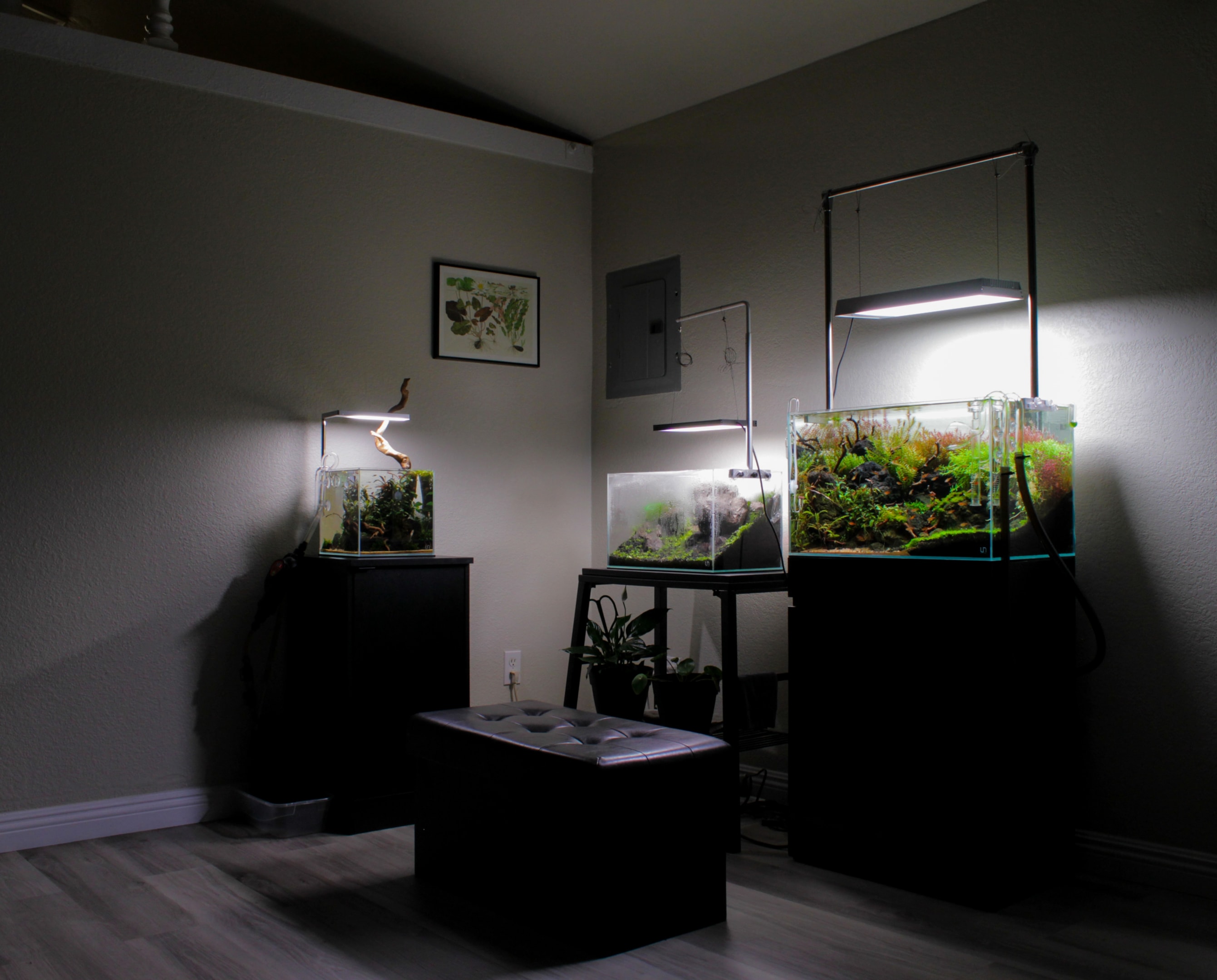
Factors to Consider When Selecting an Aquarium Size
A common question among new hobbyists is, "how big of an aquarium do I need?" The answer depends on several factors, including the type and number of fish, available space, and maintenance commitment. Some species require more swimming room, while others can thrive in compact environments.
Larger tanks tend to be more forgiving when it comes to water chemistry, as they provide a more stable ecosystem. However, they also require more space, stronger support structures, and higher initial costs. Smaller tanks, while more affordable, require careful monitoring to prevent sudden water quality changes.
The final decision should balance personal preferences, fish requirements, and long-term maintenance. It’s always best to plan ahead and choose a size that fits both your lifestyle and the needs of the aquatic life you want to keep.
Small Aquariums: Pros and Cons
Small tanks are one of the most common aquarium sizes for beginners, often ranging from 5 to 20 gallons. These compact tanks are ideal for small fish species, shrimp, or bettas. They take up less space and require less water, making them a good choice for desks or apartments.
However, small aquariums come with challenges. Water parameters can fluctuate rapidly due to the limited volume, requiring frequent monitoring and maintenance. Overcrowding is also a risk, as even a small increase in fish waste can lead to ammonia spikes.
Despite these challenges, with proper care, small aquariums can be rewarding. Choosing hardy fish, using efficient filtration, and performing regular water changes are key to maintaining a healthy, thriving environment.
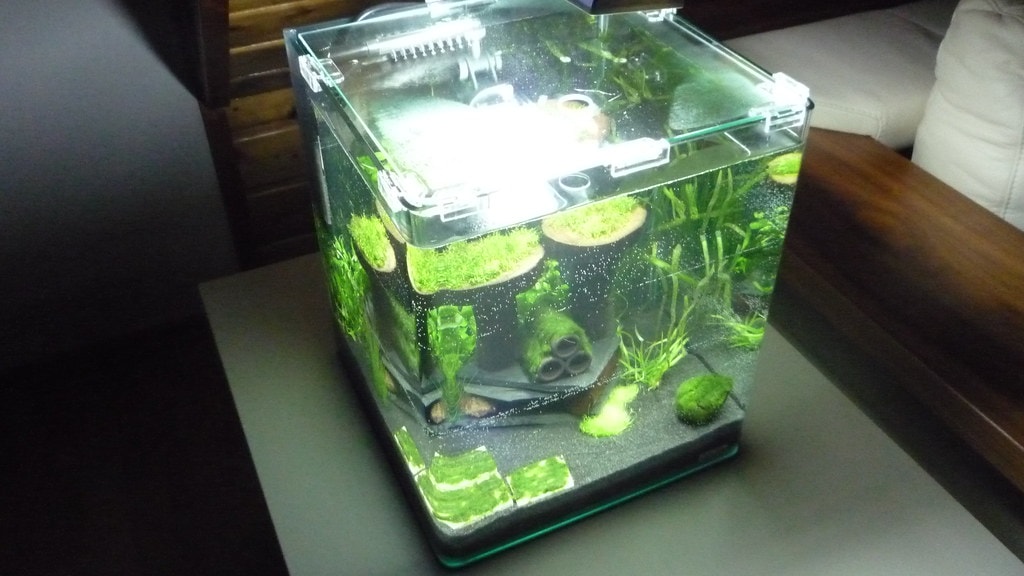
Medium-Sized Aquariums: A Balanced Choice
For those looking for a balance between size and maintenance, medium-sized tanks are ideal. Aquarium sizes and dimensions in this category typically range from 20 to 50 gallons, offering more space for a variety of fish species while still being manageable for beginners.
Medium aquariums provide more stable water conditions compared to smaller tanks. They allow for better filtration, more aquascaping options, and a more diverse selection of fish. Many community tanks fall within this range, supporting a mix of species that coexist peacefully.
When considering different sizes of aquariums, a medium tank is often recommended for first-time fish keepers. It provides flexibility in stocking options while keeping maintenance requirements reasonable.
Large Aquariums: Ideal for Bigger Fish and Advanced Setups
A large aquarium provides ample space for a wide range of fish species, making it a preferred choice for experienced aquarists. Tanks over 50 gallons allow for a diverse ecosystem, including schooling fish, larger predators, and even planted aquascapes. These setups offer greater stability in water conditions, reducing the risk of sudden parameter fluctuations.
However, a large aquarium comes with additional challenges. The weight of a filled fish tank increases significantly, requiring a sturdy aquarium stand or reinforced flooring. Proper planning is essential to ensure the chosen room can accommodate the dimensions and structural needs of the tank.
For those passionate about fish keeping, investing in a large aquarium can be highly rewarding. The increased swimming area promotes natural behavior, and the spacious design allows for creative aquascaping possibilities. When choosing a big fish tank, always consider the available space and maintenance requirements.
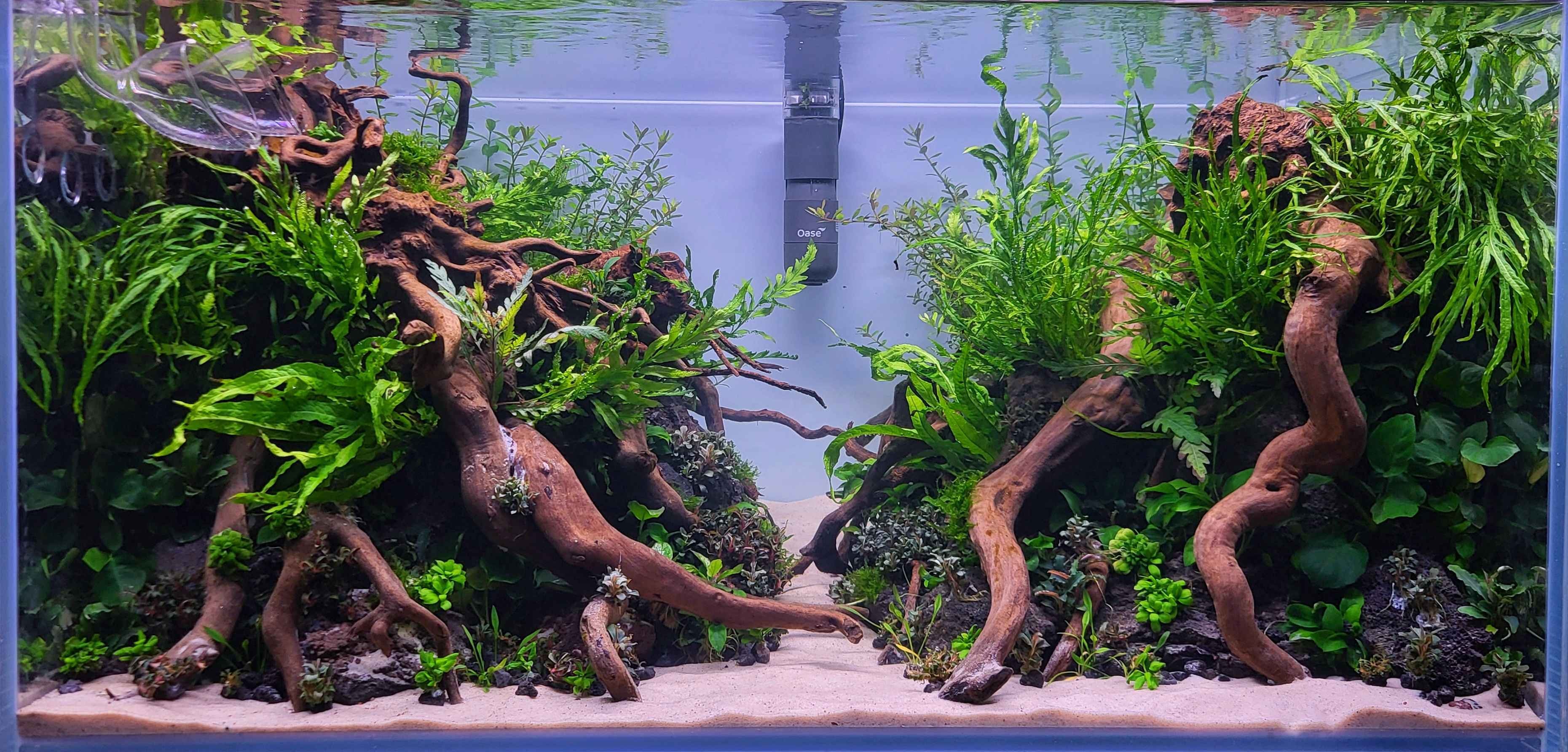
Small and Nano Aquariums: Compact but Challenging
A nano aquarium is perfect for those with limited space but still eager to enjoy the beauty of an aquatic setup. These compact tanks, usually under 20 gallons, are ideal for smaller fish, shrimp, or snails. They are easier to place in various locations, such as offices or apartments, making them a popular choice among beginners.
Despite their convenience, maintaining a nano aquarium requires extra care. The smaller water volume means that changes in temperature, fish waste, and nutrient levels happen quickly. Unlike larger tanks, where conditions are more stable, small setups demand frequent monitoring to avoid sudden shifts in water quality.
Choosing the right aquarium size depends on experience level and dedication to maintenance. While a nano aquarium can be visually stunning, it’s best suited for those willing to commit to regular water changes and proper stocking choices.
The Importance of Choosing the Right Fish Tank Size
Selecting the right aquarium size is crucial for ensuring the health and well-being of your fish. A properly sized fish tank allows fish to exhibit their natural behaviors, reduces stress, and helps maintain stable water parameters. Overcrowding can lead to increased aggression, poor water quality, and even disease outbreaks.
The tank size you choose should match the type of fish you plan to keep. Some tropical fish need more swimming space, while others prefer hiding spots. Researching species requirements before purchasing a gallon tank ensures you create a suitable environment. A larger aquarium generally requires less frequent maintenance than a smaller one due to greater water volume.
When selecting a fish tank, consider factors like available room, filtration capacity, and long-term maintenance. A well-planned setup will help keep your fish healthy and thriving, reducing potential problems caused by improper stocking.
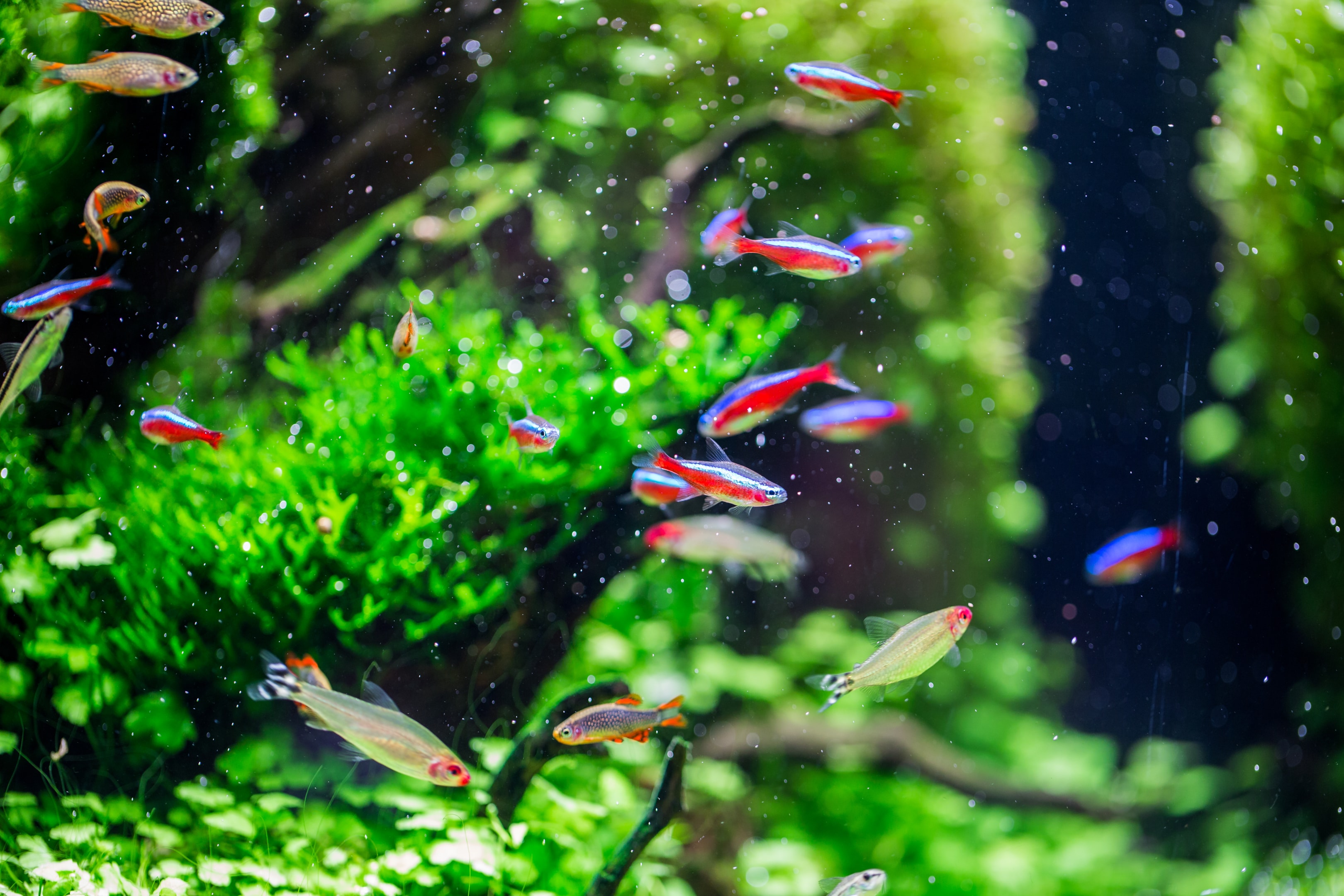
Weight Considerations: Can Your Floor Support Your Aquarium?
One critical but often overlooked aspect of choosing an aquarium is its weight when filled. Water is heavy, and even a medium-sized gallon tank can exert significant pressure on floors and furniture. A standard 55-gallon fish tank can weigh over 600 pounds when fully set up with water, substrate, and decorations.
Before setting up a large aquarium, ensure your room can support the load. Homes with wooden flooring may need additional reinforcement, while concrete surfaces offer better stability. Investing in a high-quality aquarium stand is also essential to distribute the weight evenly and prevent structural damage.
Planning ahead helps prevent accidents, leaks, or structural failures. Whether you choose a small or large aquarium, always factor in the weight to ensure a safe and secure placement for your aquatic setup.
Dimensions and Shape: Does the Aquarium’s Shape Matter?
The dimensions of your fish tank play a significant role in both aesthetic appeal and functionality. While larger tanks provide ample space, the dimensions—whether tall or wide—can impact how easy it is to clean and maintain the aquarium. A wider tank might be ideal for aquascaping, while a taller one can give a more vertical view for certain types of fish.
Choosing the correct dimensions also ensures that your fish have sufficient swimming space. Some species of tropical fish prefer horizontal swimming room, while others may thrive in vertical spaces. The shape of your aquarium should complement the type of fish you plan to keep. For instance, a nano aquarium typically has a more compact shape, which may limit the swimming space for active species.
Ultimately, the right aquarium size and dimensions depend on the kind of aquascape you envision and the needs of your fish. Consider both the practical and aesthetic aspects before selecting the tank that best fits your space.
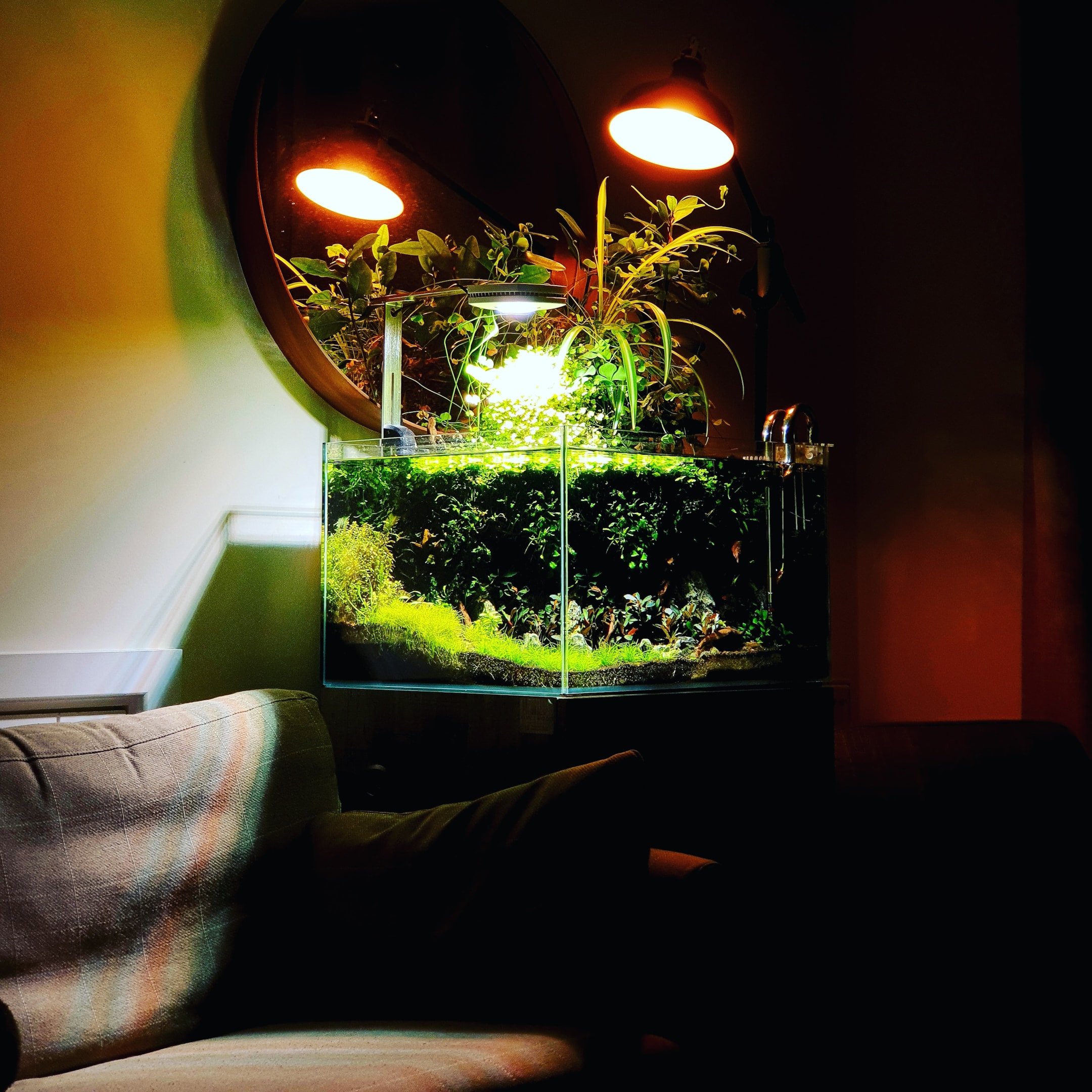
Aquarium Stand and Setup: Ensuring a Stable Foundation
When choosing a fish tank, don’t forget to consider the aquarium stand that will support it. A sturdy aquarium stand is essential for the safety and longevity of both the tank and the structure it sits on. Always ensure that the stand is made for the specific size and weight of your gallon tank, as an inadequate stand can cause leaks or even collapse.
A well-designed aquarium stand also provides extra storage space for your aquarium equipment, such as filters, heaters, and water treatment supplies. Many aquarium stands are designed with shelving or cabinets to keep things organized, making tank maintenance more convenient. If you’re using a planted aquarium setup, you may also need to store CO2 equipment, such as a CO2 tank, diffuser, and regulator, to support plant growth.
Be sure to position your fish tank on a flat, level surface to prevent any unwanted pressure points. Proper placement not only keeps your setup safe but also ensures that your fish and plants thrive in a stable, undisturbed environment.
How Fish Tank Size Affects Fish Behavior and Growth
The fish tank size you choose directly impacts the health and growth of your fish. In a tank that’s too small, fish are more likely to experience stress, which can stunt their growth and lead to behavioral issues like aggression or hiding. On the other hand, a larger tank allows for more freedom, better water quality, and a more natural environment, promoting healthier, happier fish.
For active species or schooling tropical fish, having ample space in your fish tank encourages natural behaviors, like swimming and schooling together. A large aquarium with adequate room can allow these fish to thrive, grow to their full potential, and live a long life. Conversely, a cramped tank can stunt their growth and lead to a variety of health problems.
Before purchasing your gallon tank, consider the type of fish you plan to keep and their swimming and space requirements. Proper tank size helps ensure that your fish grow and behave as they would in their natural habitats.
Conclusion: Choosing the Right Aquarium Size for Your Fish
In conclusion, selecting the right aquarium size is essential for the well-being of your fish. Whether you opt for a small nano aquarium or a large, elaborate setup, the tank size will significantly impact the health of your fish and the overall success of your aquarium. It’s important to consider the type of fish you want, their space requirements, and the available space in your home.
With careful consideration of tank size, fish species, and maintenance needs, you can create a thriving aquatic ecosystem. Keep in mind that a larger aquarium generally requires more equipment and maintenance, but the benefits—such as healthier fish and a more stable environment—are worth the extra effort.
Choosing the right fish tank isn’t just about aesthetics; it’s about ensuring a happy, healthy life for your aquatic pets. Make an informed decision, and you’ll enjoy a thriving aquarium for years to come.




